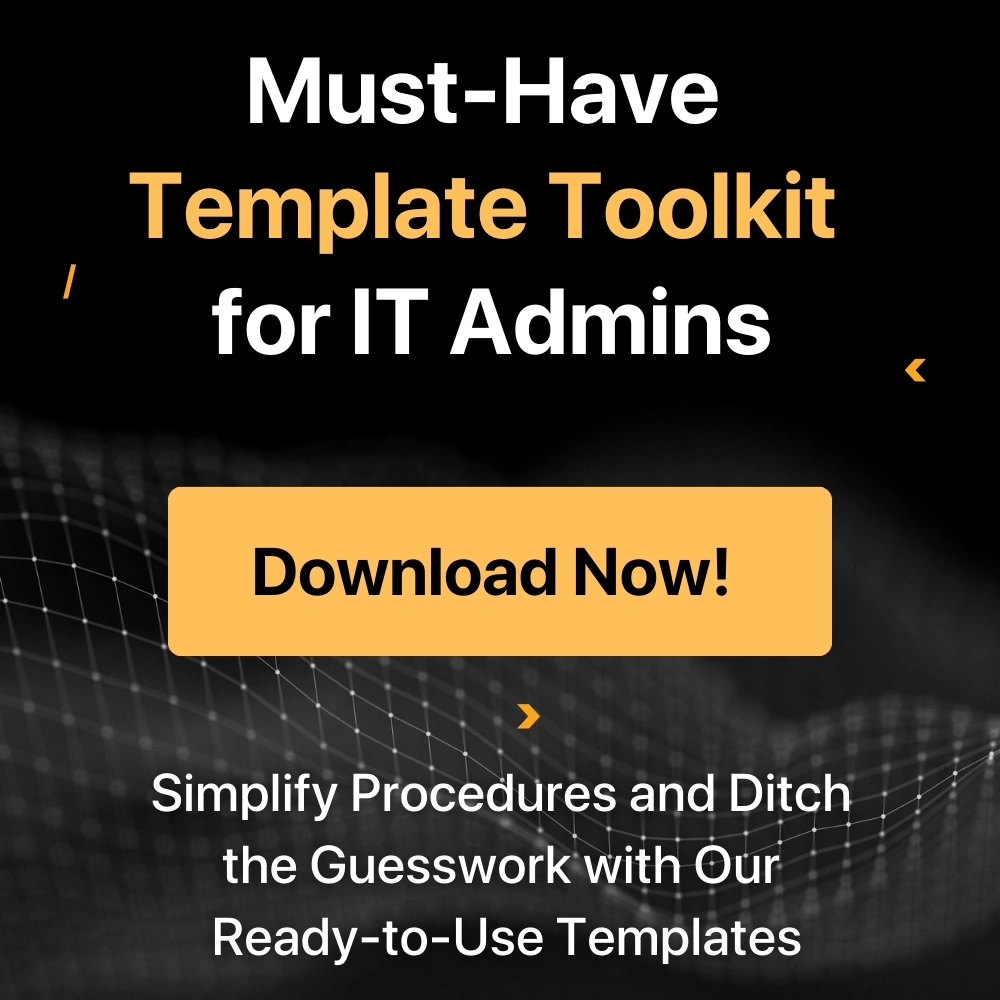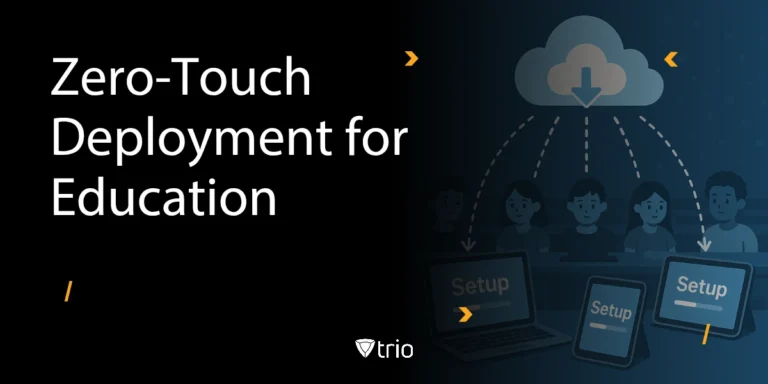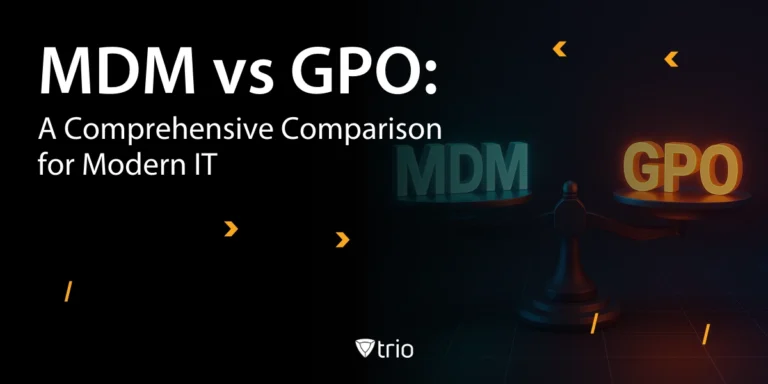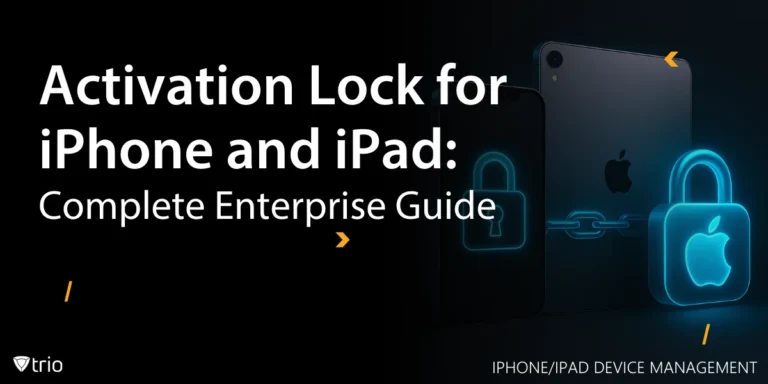The average cost of a data breach reached an all-time high of $4.45 million in 2023, according to SecuirtyHQ, putting even small mistakes into perspective for SMBs. For small and mid-sized businesses (SMBs), the risk isn’t just financial. A single misstep in access control can mean compliance issues, data loss, and days of disruption.
Enterprise identity and access management helps prevent that. Enterprise IAM lets you know who has access to what, across every system, app, and device, and makes sure that access stays smart and secure.
For SMBs juggling remote teams, tight budgets, and a mix of Apple and Windows devices, MDM platforms like Trio become essential. MDM has become a key part of the IAM puzzle, ensuring access stays controlled and compliant.
Here’s what we’ll cover:
- How enterprise IAM differs from traditional approaches
- Core features and components to look for
- Real-world use cases
- What happens if you don’t modernize
- Tips for choosing the right IAM platform
Enterprise IAM vs Traditional IAM
Traditional identity and access management (IAM) works fine when you're managing a handful of users, a single sign-on system, and a few shared drives. But when you're dealing with hundreds or thousands of employees, remote contractors, multiple cloud services, and BYOD policies, you’ve entered enterprise territory.
Key differences include:
| Feature | Traditional IAM | Enterprise IAM |
|---|---|---|
| Scale | Dozens to hundreds of users | Thousands of users, apps, and devices |
| Systems Managed | Email, file servers | Cloud apps, HR systems, CRMs, devices |
| Access Control | Manual permissions | Automated, role-based access |
| User Lifecycle Management | Mostly manual | Automated onboarding/offboarding |
| Integration Depth | Limited SSO, basic directories | Deep integration with identity providers and MDM tools like Trio |
Enterprise IAM is built to handle:
- Complex user hierarchies and role-based access control (RBAC)
- Multiple provisioning workflows across systems
- Real-time access decisions based on device health or location
- Automated de-provisioning to avoid dormant accounts
This becomes especially critical when SMBs grow and face challenges like contractor turnover, acquisitions, or cloud tool sprawl. Without IAM enterprise capabilities in place, IT teams are left to manually manage every access request, wasting time and increasing the risk of errors.
Trio MDM complements this by tying device-level controls into the IAM flow: access to corporate apps can be automatically restricted based on device compliance status, making the whole system smarter and safer.
Components of Enterprise IAM
Enterprise IAM isn’t just a login system — it’s a framework for secure, scalable access across the entire organization. These are the components that make it work:
1. Identity Provisioning and De-provisioning at Scale
Automated user account creation and removal is the foundation. When someone joins the company, they get the right access — no tickets required. When they leave, their access disappears instantly. This eliminates orphaned accounts and human error.
Why it matters for SMBs: Manual onboarding/offboarding wastes time and creates security gaps. Automated user provisioning ensures consistency and saves your lean IT team hours each week.

2. Enterprise-Grade Authentication
Standard passwords don’t cut it anymore. Enterprise IAM supports:
- Multi-factor authentication (MFA)
- Biometrics
- Hardware tokens and mobile authenticators
Real-world impact: Without MFA, a leaked password on a single device can expose your entire environment. Trio MDM helps enforce MFA at the device level too, syncing with IAM policies.
3. Access Control With RBAC and Policy-Based Permissions
Rather than assigning permissions user by user, role-based access control (RBAC) defines what roles (e.g., Sales Manager, HR Assistant) can access. Policies define access rules — like time of day, location, or device health.
Pro tip: Pair RBAC with MDM enforcement — e.g., only grant access if a device is encrypted and compliant per your Trio policies.
4. Directory Services
Enterprise IAM systems rely on directories like:
- Active Directory (AD)
- LDAP
- Azure AD / Entra ID
These directories act as the single source of truth for users and groups. IAM platforms pull from them to enforce consistent access.
5. Centralized Audit and Access Logs
A strong IAM system keeps track of who accessed what, when, and how. This is essential for incident response and compliance.
For SMBs, this means: Instead of scrambling during an audit or breach, you’ve got clear logs — from login attempts to file access — ready to go.
Why SMBs Need Enterprise IAM
SMBs (50–200 employees) often operate like mini-enterprises but lack the resources. Here’s why IAM is critical:
1. Reduces Security Risks
- Blocks access from compromised accounts
- Ties access to real-time device posture
2. Supports Compliance
- Audit-ready logs for SOC2, ISO27001, HIPAA
- Controlled access based on user/device status
3. Streamlines Onboarding & Offboarding
- Auto-provision apps when a new hire joins
- Instantly revoke access when a user exits
4. Boosts IT Efficiency
- Saves hours weekly on manual requests
- Reduces password reset tickets
IAM + MDM = Unified Security for Devices and Data
A standalone IAM system secures accounts. But what if a device is jailbroken or missing a patch?
With MDM integration (like Trio):
- IAM policies are enforced only if the device is secure
- Access can be blocked automatically for non-compliant devices
- Device status (OS, location, encryption) influences identity decisions
This means your IAM system isn’t just granting access based on who someone is, but whether their device meets your security standards.
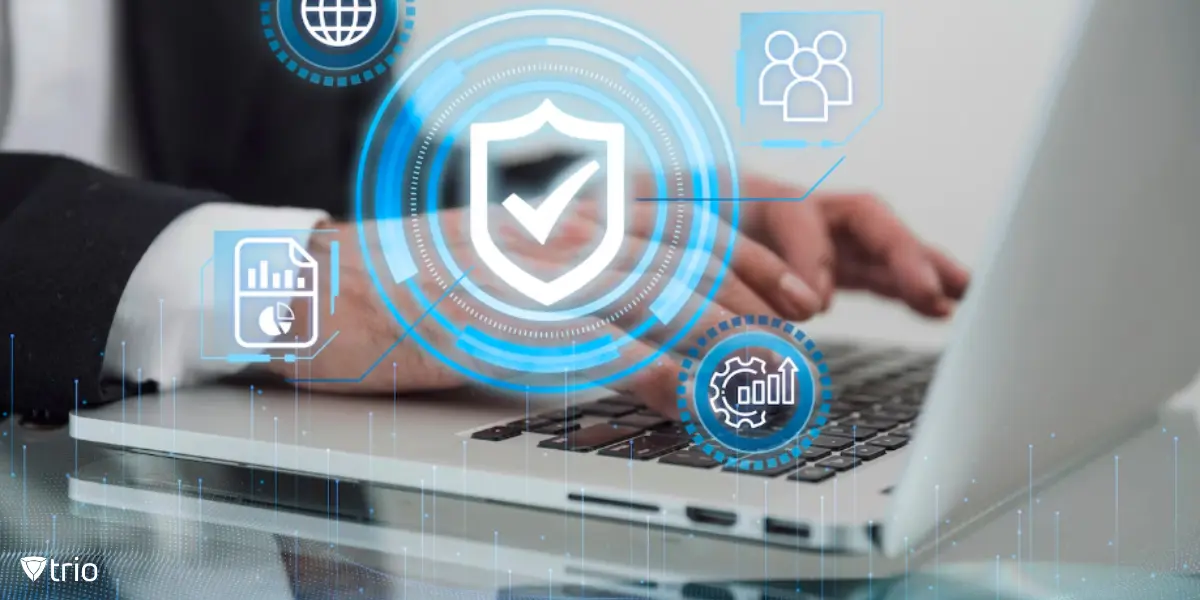
Common IAM Use Cases for SMBs
To bring the concept to life, here are a few real-world examples where enterprise IAM makes a measurable difference:
Scenario 1: Onboarding 50 New Employees
HR creates a record. IAM provisions access to Gmail, Slack, CRM. Trio configures devices with work profiles and usage policies.
Scenario 2: Rapid Offboarding During Layoffs
IT runs a single workflow that revokes all access, disables accounts, and triggers Trio to wipe devices remotely.
Scenario 3: Securing Contractor Access
IT creates time-bound roles for vendors. Access expires after 14 days. Devices are containerized via MDM.
Scenario 4: Temporary Access for Internal Projects
Assign limited-time access to employees joining internal task forces. Automatically expire access once the project ends.
Scenario 5: Restricting Access to High-Risk Apps
Prevent access to financial or customer data apps unless the user is on a company-managed, encrypted device.
What Happens If You Don’t Modernize IAM?
- Orphaned accounts
- Ex-employees with lingering app access
- Shadow IT tools storing sensitive data
- No logs during a breach investigation
- Unpatched phones accessing HR or finance apps
- Higher operational overhead on IT teams
The Future of IAM for SMBs
Here’s what’s on the horizon for enterprise IAM, and why it matters for SMBs:
- Passwordless Authentication: Biometrics, passkeys, push-to-verify
- Zero Trust Integration: Identity + device + context = smarter access
- AI-Based Risk Detection: Suspicious behavior flagged in real-time
- Full Lifecycle Automation: From hire to retire, IAM handles everything
- Decentralized Identity: Blockchain-based ID models to reduce identity silos
It’s Time to Upgrade to Enterprise IAM
For SMBs, enterprise identity and access management isn’t overkill—it’s a must-have. When paired with an MDM platform like Trio, IAM doesn’t just protect your systems. It:
- Saves IT hours
- Keeps you compliant
- Prevents breaches
- Scales with your growth
Next Steps:
- 🔐 Test full IAM + MDM functionality free for 14 days
- 🌟 Book a 1:1 demo with a Trio expert
- 💬 Get custom advice on integrating IAM + MDM for your needs
IAM isn’t just a security tool. It’s a growth enabler.
Frequently Asked Questions
You can, but it’s risky. IAM verifies identity; MDM ensures the device is secure. Together, they close the loop.
Orphaned accounts, lost devices with access, audit failures, and data breaches—all of which cost far more than IAM software.
From provisioning Google Workspace to revoking Slack access and remotely wiping devices, all without human intervention.
Improved IT efficiency, faster onboarding/offboarding, reduced helpdesk tickets, and stronger compliance posture.
Start with risk reduction (audit, breach prevention), time saved (manual IT work), and security maturity.
Yes, many IAM platforms support LDAP and on-prem AD alongside modern cloud services.
Get Ahead of the Curve
Every organization today needs a solution to automate time-consuming tasks and strengthen security.
Without the right tools, manual processes drain resources and leave gaps in protection. Trio MDM is designed to solve this problem, automating key tasks, boosting security, and ensuring compliance with ease.
Don't let inefficiencies hold you back. Learn how Trio MDM can revolutionize your IT operations or request a free trial today!

